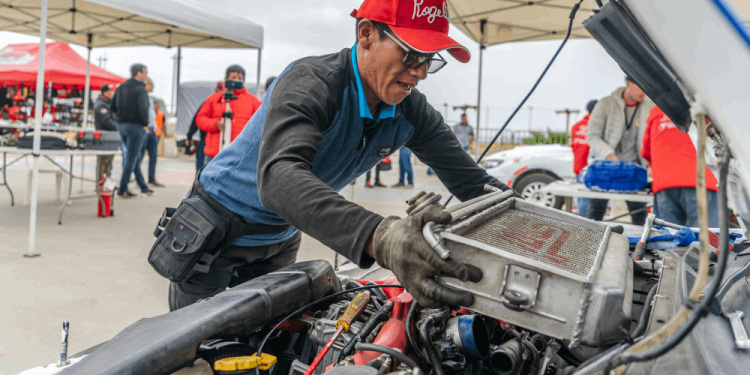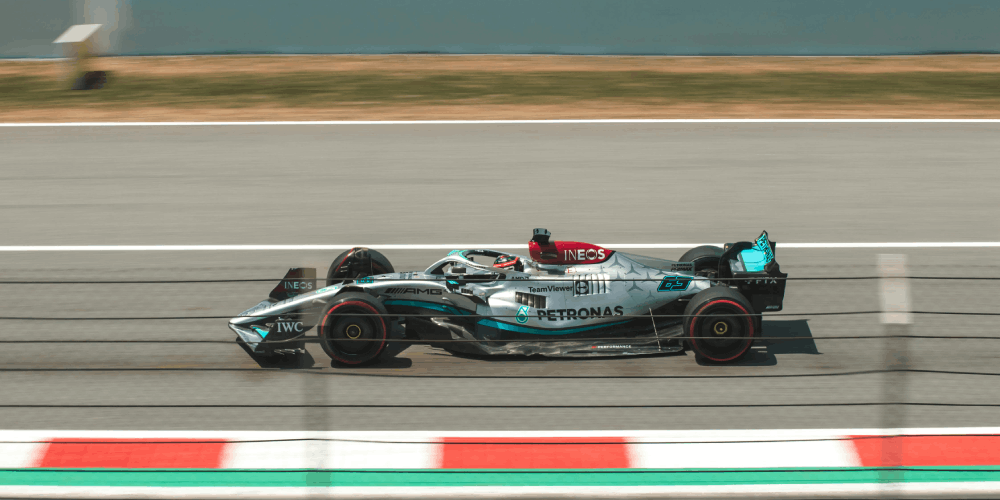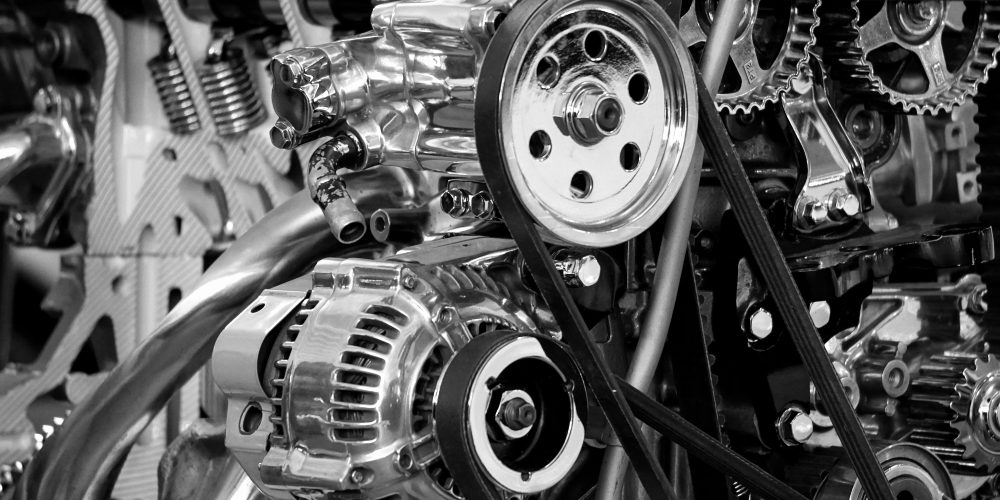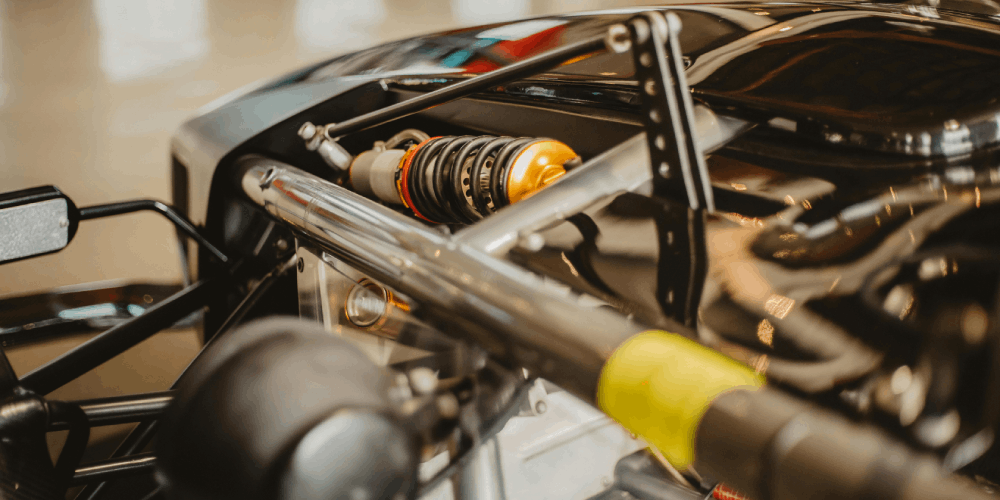F1 Car Structure Explained – Analyzing F1 Car Anatomy In 2024
Posted: May 13, 2024
Updated: May 13, 2024
-
Formula 1 car anatomy
-
What makes an F1 car?
-
F1 car structure explained

It’s time for us to have the F1 car structure explained to all of the bettors who wish to understand the key components of the race. If you are following the constructor’s news, you can easily figure out when the cars are going to catch up with each other based on a decision, which makes for a great advantage for online betting.
Today we are going to give you an introduction to the engineering of F1 cars. Many people watch the sport, thinking that all that matters is the driver and their skill to navigate the cars at near-light speed. However, that is just objectively false! The main reason why people love F1 is due to the finesse in high-end vehicle engineering. Of course, we can not actively see each part of the car being utilized.
However, the masterpiece that is being engineered is generally the result we see together with the driver. Thus, we are going to help you understand the quintessential parts of an F1 racing car. Anything that goes faulty during the race can cause massive issues which decreases the driver’s chances. If you are here to bet on F1, then all you have to do is register at some of the online sportsbook sites in the US.
Chassis – F1 Car Structure Explained
The chassis is the foundation of the car as a survival cell for the driver. It is made out of ultra-lightweight carbon fiber for maximum strength and minimal weight. The modern F1 cars are monocoques, meaning the chassis is a single-piece shell incorporating the engine and gearbox. This creates the chassis a rigid structure that houses everything. The minimum weight limit for the chassis is 740kg.
This is the core reason why F1 is the best sport. The answer would be the innovative ideas and the upgrades the cars went through from simple cars to go-kart machines, and finally, the high-end beast machines we see today. A chassis’s design helps us to distinguish cars. If you are interested in betting on the next winner, register at VAVE Sportsbook.

Wings And Aerodynamics
The front and rear wings are essential to generate downforce. This is going to give the car some sort of grip on the grou
nd while moving. It not only ensures safety but makes navigating much more fluid and windy. The general design includes a diffuser, which is going to give it an aerodynamic motion. Some of the top 7 car manufacturers in racing are trying to maximize their strategies around aerodynamics right now.
And of course, it has the F1 car structure explained pretty well. While the engine gives the speed, the chassis gives the safety, the wings are all about control. They can level the two wings. Based on which wing is lower, the car’s weight will either focus on the front or the back. Verstappen’s driving style is a loose-rear style, and this is why he is dominating right now with an aerodynamic car.
Engine – F1 Car Structure Explained
Yes, the engine! According to the Las Vegas Weekly, the F1 car’s engine is called a power unit. It is a hybrid of a petrol internal combustion engine. It has a hybrid energy recovery system (ERS) that requires a 1.6-liter turbocharged V6 engine. The ERS captures wasted energy from braking, turning it into electricity.
This is going to give short bursts and surges of energy to the car. Essentially, the new engine seeks to turn F1 into a more sustainable sport. Maybe it is at the cost of pure speed but in the end? It will only turn the brakes into energy, making a much more healthier planet. In essence, these are beast engines that are fueling themselves in a way from the driver’s actions.

Suspension
The suspension is essentially a complex system of linkages and shock absorbers connecting the wheels to the chassis. This is allowing the wheels to move independently for better handling and road feel. The pushrod or pullrod suspension setups are used when a team is striving to optimize geometry for specific tracks and driving styles. Essentially, the suspension is going to offer a general style for the drivers to go with the car. Mixing the suspension and leveling the wings are going to determine a driver’s style.
To have the F1 car structure explained, is what makes the car controllable in the first place. Without a proper suspension, a car would become uncontrollable with such speed. According to Autosport, the suspension may respond differently to other components. Thus, they have to build the car with the suspension in mind.
Miscellaneous Components – F1 Car Structure Explained
Of course, the cars have thousands of small components. I started to follow F1 when I realized that a small clock could easily disrupt the whole car system. According to Reddit, there are rule-based elements in a car, such as the plank beneath the structure. But there are also essential components such as the brakes, which provide stopping power to handle the immense speed, and of course, to generate energy with the new engine.
The tire which needs to grip the track, but also allow strategic changes, and the steering wheel, have buttons on them, so the driver may command several different strategies, set up the DRS (drag reduction system), and communicate with the pit crew and the teammate pilot.

The Driver
There is one final component that has the spirit of an F1 car structure explained. This is the human. The pilot, and even the pit crew who is going to work on the car. An F1 car is amazing, but alone it is just an empty shell of high-tech energy when it comes to racing. This is why people are not trying to push an A.I. racing event. Essentially, humans are to make decisions, take risks, change strategies, and adjust cars to their height, posture, preference, style, and many different factors.
To understand how Verstappen is so good, we have to understand the combined effort of Red Bull to optimize every molecule in the car for his needs. Trust and a family-like bond are essential for an F1 team to win. If you wish to bet on any of the drivers, please register at VAVE Sportsbook!












